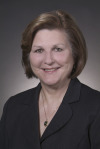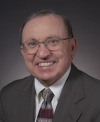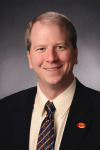AMES, Iowa – The 2012 election season will reach its dizzying conclusion on Tuesday as millions of Americans go to the polls amid a frenzy of exit polls, last-minute pitches from campaigns and media speculation about who’s up and who’s down.
Both Barack Obama and Mitt Romney would love to claim victory in Iowa, one of a handful of swing states that could determine the outcome of the presidential election. For Iowa political junkies, it’ll be a tall order to cut through the fog of Election Day to keep tabs on how things are shaping up. Luckily, political experts at Iowa State University have highlighted some plot threads that political watchers should keep an eye on as the drama unfolds.
James McCormick, chair of the ISU Political Science Department, said Dubuque and Scott counties could offer some insight into how the election will play out in Iowa. Both presidential campaigns have worked hard to make inroads with voters in the two eastern counties, and if one of the campaigns takes a significant edge in that part of the state, the momentum could prove decisive, McCormick said.
He pointed to the large Catholic population in the eastern part of the state as a potential bellwether.
“I think those counties are in play in the sense that there’s been so much heavy campaigning in that area,” McCormick said. “Both campaigns see an opportunity there.”
McCormick said voter turnout in western Iowa, traditionally a Republican stronghold, could be a measure of how well Romney has energized the conservative base of his party. Weak turnout in deep-red western precincts could foreshadow a tough night for the Republican nominee, he said.
Steffen Schmidt, a University Professor of political science, said Iowa’s suburban areas, especially those surrounding Des Moines and Cedar Rapids, could be important bellwethers that indicate whether Obama or Romney will carry the state. Schmidt said the suburbs tend to have higher concentrations of what he calls “true independents,” or voters who identify with neither major political party and are still undecided about how they’ll vote. In a highly polarized political atmosphere, these undecided voters are a high priority for both presidential candidates, Schmidt said.
“The true independents don’t lean toward one party or another, and they have an open mind about which candidate to support,” he said. “The problem is they’re not always reliable voters. If they haven’t yet made up their minds, they might not vote at all.”
Schmidt also noted that the weather could impact the election. Inclement conditions in Iowa could suppress turnout, especially among older voters who may have a more difficult time getting to their polling locations, he said.
Dianne Bystrom, director of the Carrie Chapman Catt Center for Women and Politics, said recent polling shows that precious few likely voters in Iowa have not yet made up their minds. Bystrom pointed to an NBC/Wall Street Journal/Marist poll from late October reporting that all registered and likely voters who responded to the poll said they had chosen a candidate whom they “somewhat support” or “strongly support.” None of the likely or registered voters said they were unsure or might vote differently.
That means the campaigns will spend less time trying to convince undecided Iowa voters to join their camp in the final days before the election and more time making sure their supporters turn out to vote, Bystrom said.
“No one said they might change their mind or were unsure, which is pretty amazing,” she said. “Turnout will be the key, with 60 percent reporting they were very enthusiastic to vote and 28 percent somewhat enthusiastic.”
David Peterson, a professor of political science and interim director of Iowa State’s Harkin Institute of Public Policy, cautioned against putting too much stock in Election Day predictions without proper context or an understanding of historic trends.
Peterson said one of the best ways to gain insight into which candidates are doing well as the returns come in is to compare exit polling from a particular region or precinct with previous election results for that same location. For instance, if a candidate consistently performs better on a precinct-by-precinct basis than previous candidates of the same party have fared, that could be a sign for optimism.
“I’m less convinced by the usual bellwethers reported in the media,” Peterson said. “If Romney, for example, carries an area by a certain margin, that doesn’t mean much unless you know how Republicans have done in the past for that same area. You need to have that degree of context.”



